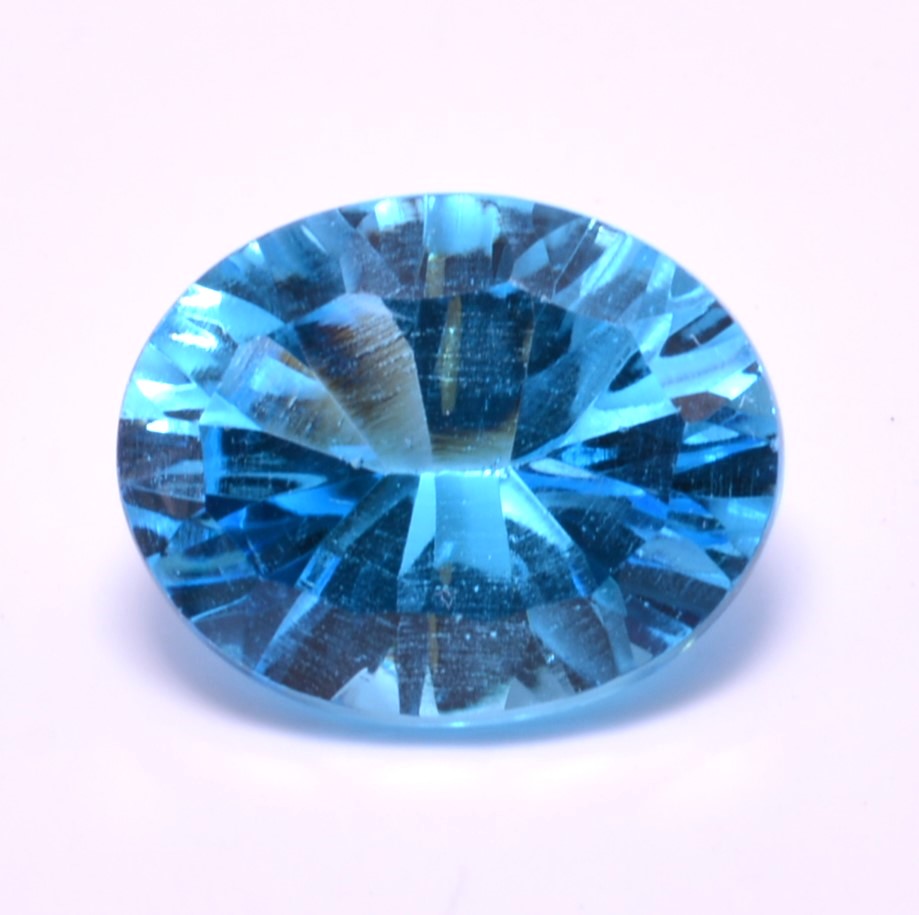
Precious stone treatments
Gemstones can undergo all sorts of treatments to enhance them. This includes amplifying color, masking, or reducing inclusions. Humankind has shown a great deal of imagination in this area since the earliest days of using gemstones.
Here is a non-exhaustive list of the main treatments encountered.
1 Low temperature heat treatment
The most common treatment is heating a few hundred degrees (around 400 to 900°C depending on the stones) sometimes called traditional heating because it is the first treatment that was used by men. It is tolerated because it is considered the continuity of what happens underground during the formation of gems. We can still call a stone treated in this way as natural and the precision of this treatment is not mandatory. This is done on a lot of stones. Often cannot be detected because it does not leave a trace, does not impact the inclusions or it requires extensive laboratory analysis (and even then). As the reporting of this treatment is not mandatory and difficult to detect, some resellers do not hesitate to sell heated stones as not being heated because even if it is tolerated, an unheated stone will sell for more.
2 High temperature heat treatment
Heating at very high temperatures (1500 to +2000°C). Especially for corundums (sapphire and ruby). We are close to the melting points of the stones. The internal structure is modified, the inclusions can undergo modifications. This will improve the color and clarity of the stone. This type of heating is sometimes carried out by adding additives that will be incorporated into the stone and change its color permanently. This is the case with titanium, which will make sapphires bluer. Beryllium, which will make sapphires yellow, orange to red (a color that is quite easy to recognize). All of this is considered a different treatment from simple heating and must be reported as such to the buyer because it devalues the stone. This is why some resellers fail to specify it. But the impacts can be seen quite easily using a magnifying glass or a microscope for a gemologist, otherwise a laboratory will be able to see it.
3 Filling
Heating can also be done by adding glass or derivatives that, when melted, will penetrate the fractures of the stones to make them invisible. This is widely used for sapphire and ruby. Sometimes there may be more glass than stone. In this case, we speak of a composite stone. This treatment should be specified. It is often detectable by a gemologist, otherwise a laboratory will detect it.
4 Oiling the emeralds
The oil will mask the inclusions that are often very present in emeralds by penetrating into the cracks. This is tolerated if the oil is not colored to change the color of the emerald. We can still talk about natural stone and reporting is not mandatory. Given that it is the color of the emerald that will determine its price, if we add a colored oil, we consider this as another treatment that will greatly devalue the stone and must be reported. 90% of emeralds on the market are oiled. The less it is oiled, the higher its price will be. This treatment is reversible.
4 Resining
Also used on emeralds like oil except that this treatment is not reversible because the resin hardens and cannot be removed (except some laboratories with chemicals and their homemade recipe). The resin is not stable over time and after several years can change color/appearance...and the stone becomes ugly. It is a little less used nowadays because it lowered the price of emeralds in the past.
- Oiling and resinating techniques tend to be tested on new stones but not yet in a widespread manner.
5 Irradiation
often gives beautiful colors sometimes very intense. This type of treatment is very delicate because undetectable even for a laboratory. We know that certain stones are commonly irradiated and it is accepted as for blue topazes. But there are others like kunzite, certain tourmalines which exist naturally but which are also sometimes irradiated. Only the honesty of the seller can make this be reported. This treatment is not necessarily stable over time and can be particularly sensitive to sunlight. Some irradiated stones will see their color fade if they are exposed to sunlight for a long time. This can be used as a test but at the risk of losing the beautiful color of the stone.
6 Stones That Are Rarely or Never Treated
Some stones are not treated or are rarely treated. This is the case for garnets (we are starting to see them on certain Tsavorites), peridots, spinels, and chrome diopsides.
7 Future treatments
There are always people looking for new, undetectable treatments to transform poor-quality stones into beautiful ones and sell them at a high price. This list, which is not exhaustive, will surely grow over time. Perhaps these "new treatments" already exist but have remained confidential for the moment because not all the treatments mentioned here were shouted from the rooftops at the time of their discovery.
On this site, any treatment undergone by a stone is clearly indicated in its description. Even simple heating will be mentioned as heated.
To learn about the legislation on processing and reporting, you can read the following decree:
Collections
View all-

Aquamarine
Aquamarine is the blue variety of beryl (emerald family). It's a classic...
-

Tsavorite Garnet
Tsavorite garnet belongs to the grossular garnet family. They have a beautiful...




